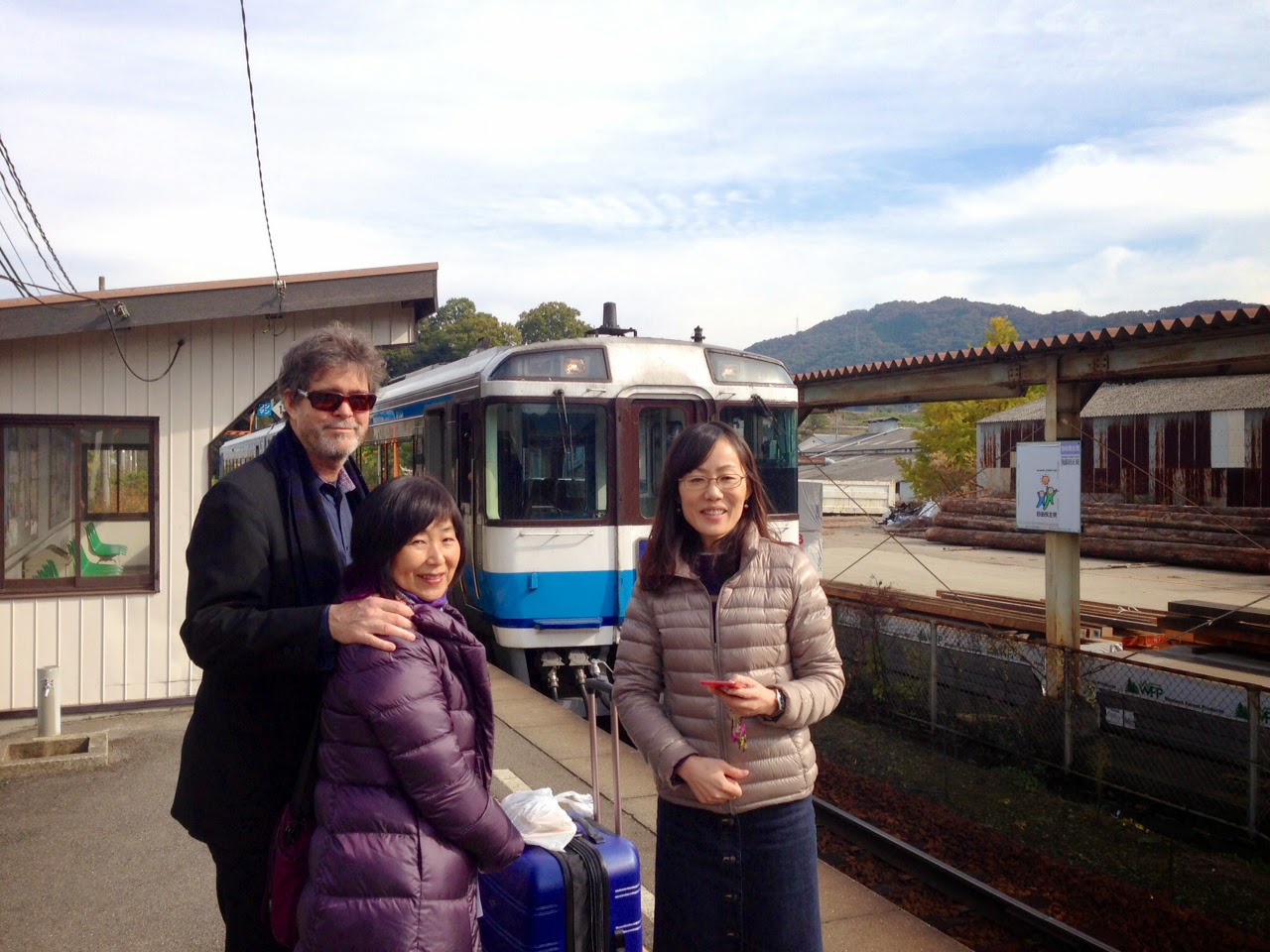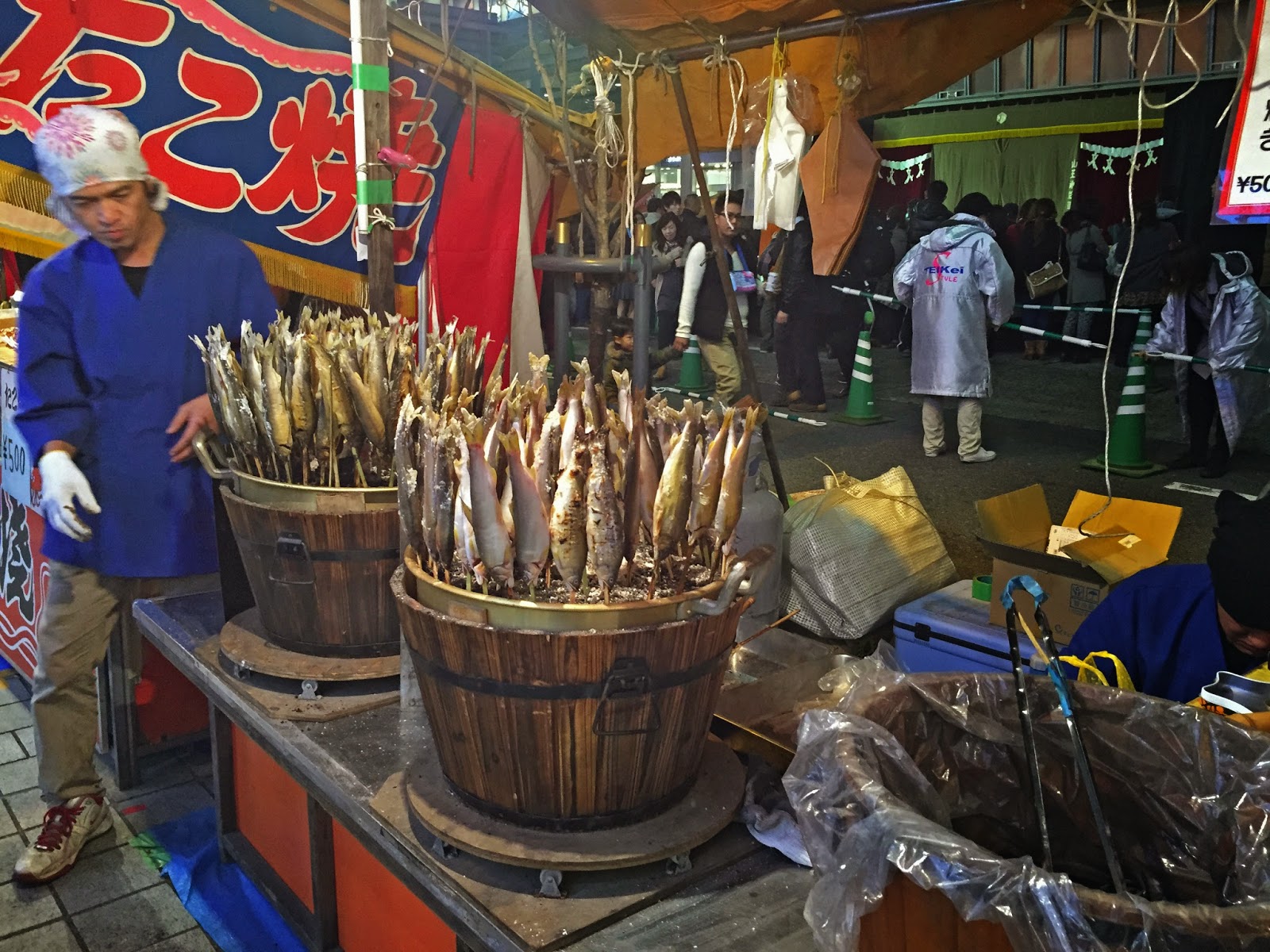Dear friends and family,
Now for one of the highlights of our trip, the fabulous Miyajima. I have wanted to go here since I first saw pictures of it, decades ago. I tried to get accommodations at Miyajima, but everything was booked. It is peak time to view the autumn colors. Then I read about how many tourists flood in and became apprehensive that it had become a huge tourist site. Miyajima has been a pilgrimage destination site for a long time, but it is far more significant, far more historic, with far more gravitas to ever succumb to the Western, Las Vegas, Disneyland type of tourist site (or so I fervently hope).
That is how we ended up staying in Hiroshima, which is close by. Some of the guide books make it sound rather difficult to get to Miyajima, aka Itsukishima, which is actually its real name. I ended up receiving directions from a non-English speaker at the front desk of our hotel, so it was not difficult at all. He told me in Japanese and circled things on a map. We ended up walking a few blocks up from our hotel, (The Hotel Washington), another comfortable, new hotel, catching a street car, which trundled along for about an hour to a ferry terminal. We followed a small crowd of people to the terminal and caught the ferry for the short ride to Miyajima.
There was an event going on with many kimono-clad ladies
Don with photographer photographing a class of school children. They are everywhere right now. Just noticed the Japanese businessman in his dark suit and briefcase, seeing the sights at Miyajima. The poor guy looks like he's about to start selling cleaning products. Most of the young businessmen we see are super fashionable with gelled spikey stylish haircuts.
The class picture.
The 5-tiered pagoda, which we didn't take time to see up close. You are starting to see the colors of the trees in those red splotches. We have not beefed up the color on any of the trees, but you will probably find them hard to believe. We did. The colors are hallucinogenic.
A little rivalry over some food.
We start climbing the slopes of Mt. Misen, the holy mountain. In fact, the whole island is deemed to be holy, ever since Kobo Daishi brought a form of Buddhism to Japan in the 8th century, I think -- anyway, a long time ago, and chose Miyajima as a spiritual center. It does feel spiritual.
Very impressive temple, Daisho-in, which seems to stretch over several structures, and is quite different than other temples I have seen. There is a sand mandala on the floor before the Buddha. There was also a large photograph of the Dalai Lama inside this temple.
Craig Anczelowitz (of Craig and Aya) had told us of stories of one of the lost tribes of Israel making it all the way to Japan, arriving sometime in the 1100's, I believe. They are the Hata clan, and according to the stories had European features and also brought some important innovations to the Japanese culture. Some of the Hata clan to this day are imperial court musicians. This is a Tengu, a Japanese supernatural creature who hangs out in forests and mountains. This one has wings, is carrying a scroll (the Commandments), and holding what could be a menorah, except it has 9 candles, or whatever they are. Craig sent us this interesting link:
Ancient Jews in Japan:
https://www.youtube.com/watch?v=qqIiKVPdV1A
Fun!
Now for one of the highlights of our trip, the fabulous Miyajima. I have wanted to go here since I first saw pictures of it, decades ago. I tried to get accommodations at Miyajima, but everything was booked. It is peak time to view the autumn colors. Then I read about how many tourists flood in and became apprehensive that it had become a huge tourist site. Miyajima has been a pilgrimage destination site for a long time, but it is far more significant, far more historic, with far more gravitas to ever succumb to the Western, Las Vegas, Disneyland type of tourist site (or so I fervently hope).
That is how we ended up staying in Hiroshima, which is close by. Some of the guide books make it sound rather difficult to get to Miyajima, aka Itsukishima, which is actually its real name. I ended up receiving directions from a non-English speaker at the front desk of our hotel, so it was not difficult at all. He told me in Japanese and circled things on a map. We ended up walking a few blocks up from our hotel, (The Hotel Washington), another comfortable, new hotel, catching a street car, which trundled along for about an hour to a ferry terminal. We followed a small crowd of people to the terminal and caught the ferry for the short ride to Miyajima.
It was a beautiful day. Those piers in the water are oyster beds, I think. Hiroshima is famous for its oysters.
I was eager to arrive at Miyajima around high tide, which was about 9:30 am that morning. We got there a little after 10.
The stunning Torii which marks Itsukishima shrine.
The shrine itself.
Too gorgeous!
The class picture.
Priests putting away banners after still another special event
The 5-tiered pagoda, which we didn't take time to see up close. You are starting to see the colors of the trees in those red splotches. We have not beefed up the color on any of the trees, but you will probably find them hard to believe. We did. The colors are hallucinogenic.
A little rivalry over some food.
We start climbing the slopes of Mt. Misen, the holy mountain. In fact, the whole island is deemed to be holy, ever since Kobo Daishi brought a form of Buddhism to Japan in the 8th century, I think -- anyway, a long time ago, and chose Miyajima as a spiritual center. It does feel spiritual.
Temples scattered throughout the mountainside
This color is real and not touched up one bit
The colors, the beautiful temples, the occasional sound of the large bells with their low ringing peal, and every so often the wonderfully syncopated drum beat, a bit like Taiko drumming, somewhat wild, which I think was signaling the start of a Buddhist ceremony, occasional whiffs of incense - all combine to put you in a dream-like state.
Very impressive temple, Daisho-in, which seems to stretch over several structures, and is quite different than other temples I have seen. There is a sand mandala on the floor before the Buddha. There was also a large photograph of the Dalai Lama inside this temple.
This Buddha is a jolly fellow, and compassionate also. He says if you touch his body he will take away your pains.
Underneath the temple is an underground experience, which we would not have discovered except that we saw an older couple go down the unobtrusive stairs. Passing through a curtain it was absolutely pitch black. You had to feel your way through the narrow passage. I passed along in total darkness and am happy to report that there was absolutely no urine smell, which sadly probably would have been the case in the good old US. The Japanese provide public bathrooms everywhere; how civilized and considerate. The stores often have them right in their lobby or close by, not hiding them away as Western stores do. That certainly goes far to alleviate the problem of people feeling they have to relieve themselves in public places.
Back to the pitch black passage. I felt my way around a corner, calling out directions to Don who was fumbling behind me, when lovely Boddhisatvas appeared, dimly lit. It reminded us of an art house we had seen at Naoshima on our trip with Lewis and Chandra.
There were a number of these images, swimming out of the darkness.
The Japanese have perfected long ago the Whammy effect received from multiple images. Thousands of these figures, all hand carved. All four walls of this temple were covered by these figures.
This may still be Daisho-in, although a separate structure. As always, you should be able to double click for a larger image.
Ancient Jews in Japan:
https://www.youtube.com/watch?v=qqIiKVPdV1A
Fun!
And love from Japan,
Era and Don












































































